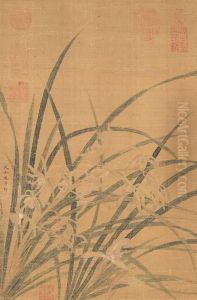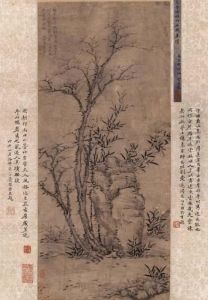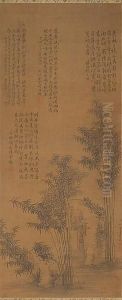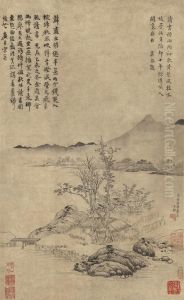Guan Daosheng Paintings
Guan Daosheng was a Chinese poet and painter who lived during the Yuan Dynasty. She was born in 1262 in Huzhou, Zhejiang Province, and was known for being one of the most famous female artists in Chinese history. Guan was well-educated and talented in various arts from a young age, and she became especially renowned for her bamboo paintings, which were characterized by their strength and simplicity. Her style was notable for its bold brushwork and an ability to convey the spirit of bamboo through her use of ink.
Guan Daosheng was also a talented poet, and her literary works often reflected the themes of her paintings. She was married to Zhao Mengfu, a prominent scholar, painter, and calligrapher, and their relationship was marked by mutual respect and artistic collaboration. Guan and Zhao had several children, some of whom also became accomplished artists.
Throughout her life, Guan Daosheng was deeply influenced by the prevailing cultural and political changes of the time. The Yuan Dynasty was a period when China was under Mongol rule, and this context influenced the arts and intellectual discourse. Despite the challenges of the era, Guan managed to achieve recognition and respect as an artist, which was a remarkable feat given the patriarchal norms and limitations on women's roles in society.
Guan Daosheng's work was often imbued with a sense of personal expression and emotion, which was somewhat atypical for the period, as many artists adhered to more traditional and impersonal styles. Her legacy includes not only her own artworks and poetry but also the influence she had on future generations of artists, particularly women, who saw her as a trailblazer in the art world.
Guan Daosheng passed away in 1319, but her contributions to Chinese art and culture have continued to be celebrated over the centuries. Her paintings are held in several prestigious collections, including the Palace Museum in Beijing, and her life and work are often studied as important examples of the artistic achievements of women in Chinese history.



